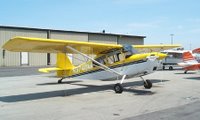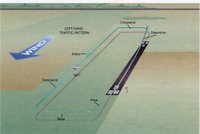Lesson 8 – Palo Alto Pattern
 As I read some of my previous blog entries, I come upon something that is very obvious to most and something I am aware of, but have not really sat back and analyzed. This is the process of a learning curve. Most everyone understands what a learning curve is. Webster’s dictionary defines it as “a curve plotting performance against practice.” If you do an image search on Google for learning curve then you will see a lot of nice graphs with many peaks and valleys. If you take a close look at the image to the left, you will see what one university defines the learning curve to be.
As I read some of my previous blog entries, I come upon something that is very obvious to most and something I am aware of, but have not really sat back and analyzed. This is the process of a learning curve. Most everyone understands what a learning curve is. Webster’s dictionary defines it as “a curve plotting performance against practice.” If you do an image search on Google for learning curve then you will see a lot of nice graphs with many peaks and valleys. If you take a close look at the image to the left, you will see what one university defines the learning curve to be. Now, everyone’s individual learning curve looks much different and it also varies by the task that one is attempting to master. But, most everyone has common elements such as the fact that there will always be progress, and there will always be some form of peaks and valleys. That is, unless the skill is relatively simple the graph will not be smooth.
Why do I bring up this point about learning curves? If you will recall, I finished the previous lesson satisfied in my overall progress but I was not too happy with my approaches and landings. Today we did 11 take-offs and landings and none required a go-around and most all would be considered good landings. Every approach was close to the centerline and at the right touchdown spot. I never got anywhere close to my abort point today.
So what changed since the last lesson? Hell if I know. That is just part of the learning curve I guess. However, there were a few factors which may have contributed to my success today. The wind was only blowing 7 knots which is less than normal and since it was later in the day, there was less turbulence on the approach. Once I got the descent locked in and I was lined up with the centerline, I didn’t have to make too many adjustments from there. I spent more time making the fine power adjustments that my instructor wants me to make to stay on the appropriate glide path.
Another factor which may have helped was that after my disappointment in the landings after the last lesson, I was more focused on bettering that today. I mentally prepared myself to do well on them and was very focused on achieving that goal. I knew that I needed to do well today to keep my confidence up. Like the learning curve, your confidence tends to go up and down during the learning process as well.
So, with all the good things that happened, were there any things that needed improvement? Well, you could say that even the best pilots can always use improvements. One of the items my instructor brought up was that I was still using too much rudder when turning base and final. Since I tend to favor easier turns, this translates into less rudder required for the turn. Also, I think my flight simulator is hurting me here. I find that in real life, when you start the turn is when you put in the rudder and then it eases up as the turn continues. In my flight simulator, you actually have to hold more rudder as the turn progresses. This is a bug in the flight modeling of the simulator but one that I need to consciously get over when flying the real thing.
One of the items we talked about before the flight is how to recover from a bounce. I did have two bounces on two separate landings today and the first one I let the nose down too much and the second one I held it perfectly. The tendency when you bounce and the plane jumps into a nose high attitude is to push the stick forward but you don’t want to do that because you will then settle down pretty hard onto the runway. You want to let the stick ease forward a little bit but by a barely perceptible amount. Then you analyze how high off the runway you are in this attitude. If you are close to the ground then you just hold that position until the plane settles onto the tarmac. If you are a couple feet off the ground then you need to add a little bit of power to soften the landing. As I said, I had two occasions to try this out today and the first was not quite as smooth as the second.
Another item we talked about was wind shear. Wind shear is defined as “a sudden, drastic change in wind direction or speed over a comparatively short distance.” If you are flying along at cruise speed at high altitude, wind shear can be an annoyance but is usually not more than that. Where wind shear gets dangerous is close to the ground. In fact, wind shear has been found to be the cause of several aviation accidents, including large jets. Unfortunately, even with all of our technology today, it is very hard to predict. Pilots usually hear about it from other pilots who have flown through it and reported it. What you can do on approach to reduce the problems caused by wind shear is to increase your approach speed. The general rule is to increase the approach speed by half the estimated velocity of the wind shear. So if we are doing a normal approach at 65 MPH and there is a 20 MPH wind shear then we fly our approach at 75 MPH. This gives us a buffer in case we encounter wind shear, but allows us to still land safely if we don’t encounter any.
Last but not least, we got to practice some power off landings today. This was the second half of our engine failure exercise. Two lessons ago, we did the first half of the exercise which consists of stabilizing the glide, alerting ATC to our problem, finding a suitable landing area, and starting the approach to the landing zone. For obvious reasons, we do not actually want to land in a field somewhere so we practice the last part in the traffic pattern. To do this, we first asked permission from ATC to do a short approach. We reserved asking for this for periods when the number of approaching aircraft slowed down. Once cleared for the short approach, my instructor pulled the power to idle when we were abeam the runway numbers.
The first two power-off landings, we would have landed in the bay as I was short. It is hard to anticipate how much the plane will glide until you actually see it firsthand; thus why we practice this maneuver before we actually have an emergency. The next two times were perfect as I touched down where I was supposed to and they were both smooth landings. Again, it is a good drill but one I hope to never have to use in an emergency.
With the success of today, it moves me one step closer to the solo. My instructor gave me all the paperwork to fill out and I have to take a quiz and answer a bunch of questions about the airplane using the pilots operating handbook. I also need to schedule my FAA medical exam as soon as possible. The main thing we have left to cover before the solo flight is crosswind landings so I need to watch the weather on the day of our next lesson to see if I can find any airports in the vicinity that are reporting crosswinds. I also have the last big item left and that is the phase check. This is where you go up with another instructor for 3-4 hours. He quizzes you on the ground before the flight and then you go up and do all the basic maneuvers, ground reference maneuvers, emergency procedures, and some landings. If he is satisfied that you can fly on your own then he signs off on you and then comes the big day. As monotonous as this procedure can be, I think I like it better than the old fashioned way of doing it where you instructor just gets out of the plane one day and says, “now go up on your own and fly three take-offs and landings.” At least this way I can mentally prepare myself for the task at hand.




